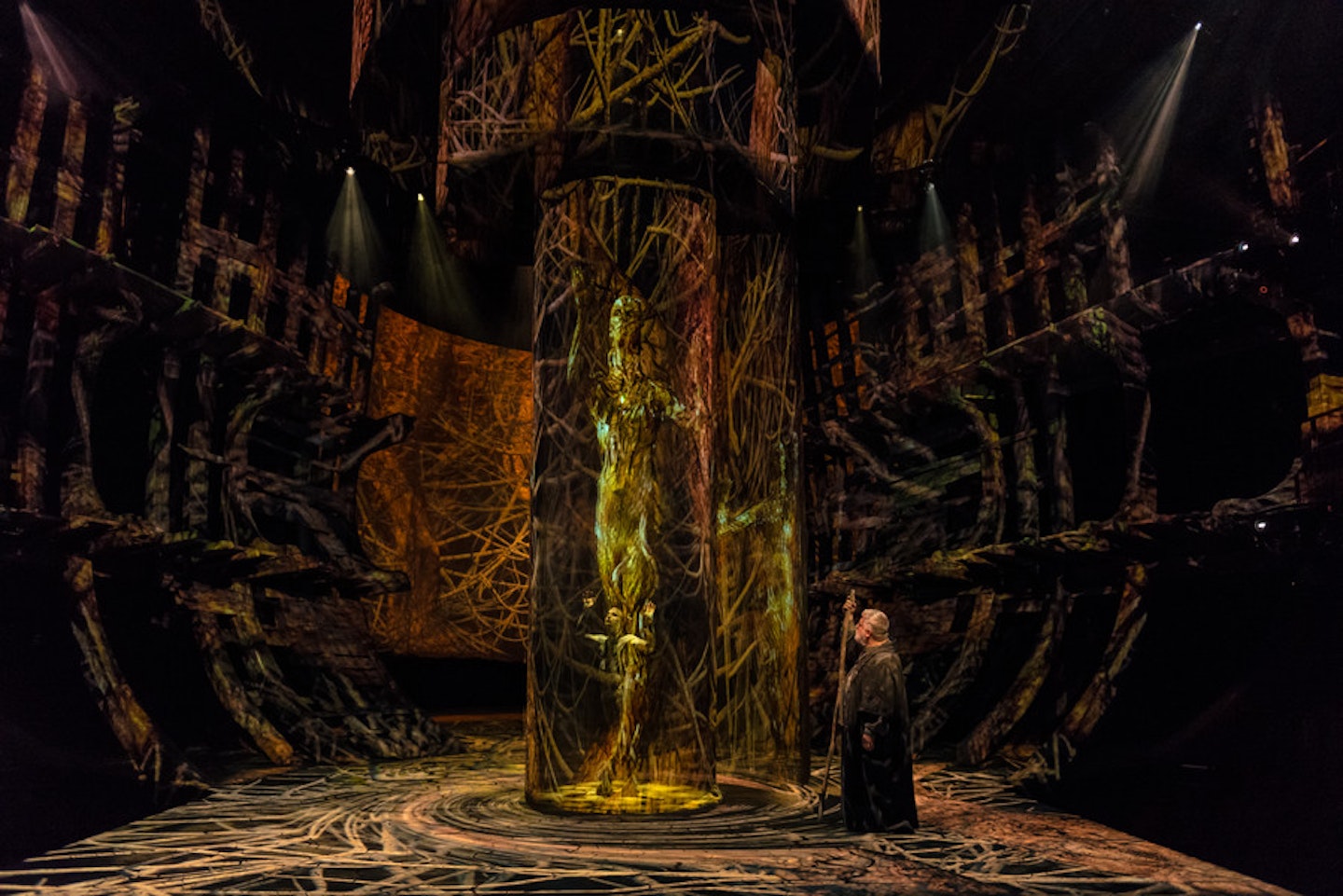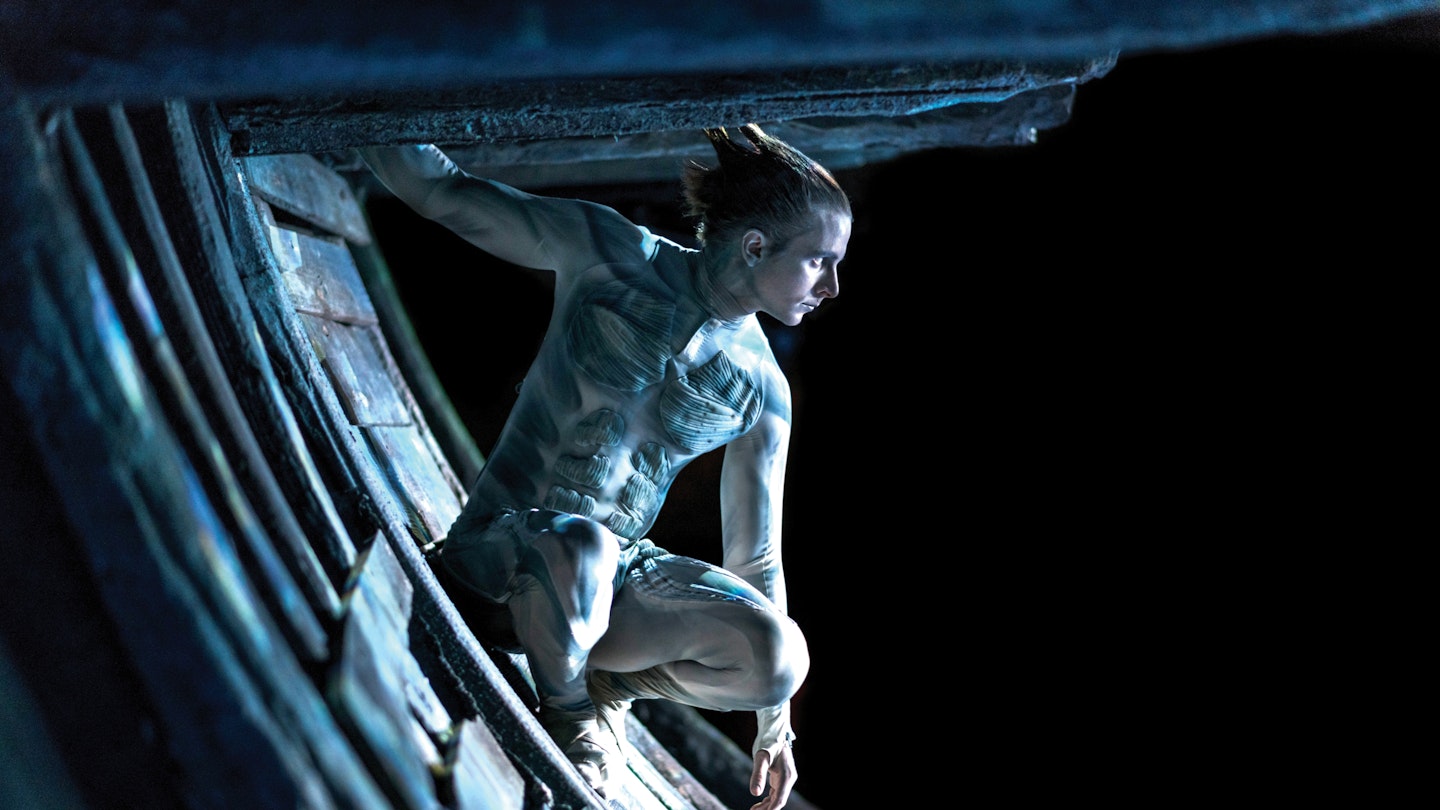Gollum. King Kong. Captain Haddock. Caesar. Andy Serkis has undoubtedly brought motion capture to the mainstream. But why should movies get all the mocap love? How about live motion capture. On stage. During a production of William Shakespeare’s The Tempest. Well, if you head to The Barbican from 30 June, you’ll witness a partnership between the Royal Shakespeare Company and Intel that delivers just that – all with the help of Andy Serkis’ company The Imaginarium Studios.
For those unfamiliar with this particular Shakespeare, the action transports us to a remote island where Prospero (BAFTA winner Simon Russell Beale) and daughter Miranda have been stranded for over a decade. Handily, Prospero has some nifty magical powers up his sleeve, so, when the men who left him abandoned pass through nearby waters, he wreaks elemental vengeance on their ship, also leaving them deserted. Cue a patchwork of family rivalry, comedy hijinks and young love in a groundbreaking production from RSC Artistic Director Gregory Doran that will have special effects lovers struggling to retrieve their jaws from the floor.

But where does Andy Serkis fit into all this? After an initial 2014 meeting between the RSC and the clever technical bods over at Intel, it became clear that the play’s mystical sprite, Ariel, was ripe for some mocap meddling. “The key to unlocking Ariel was performance capture,” explains the RSC’s Director of Design, Stephen Brimson Lewis. “You didn’t have to Google much to find [Serkis’ motion capture studio] The Imaginarium! There’s something about being able to transform yourself into something else, and performance capture takes that to another level. You’re not just putting on prosthetic makeup and becoming Gollum, you’re changing your height and your size, and you can become King Kong! We knew Andy would come at it from an actor’s point of view rather than just technical, so we gave [Ariel] a boot camp with him.”
The measure of our success is when our tools disappear and the art is what we leave behind.
From transforming into a 40-foot harpy to terrify Prospero’s enemies, to a moment where 27 versions of the magical being fly around the space, Ariel’s live motion capture is harnessed to dazzling effect. But, unlike Serkis’ infamous ping pong ball-covered suits, Ariel’s garb is significantly more elegant. “Sensors are hidden in his costume,” Brimson Lewis elaborates. “It’s a GPS system, so there’s bits of the set where he can’t go as we’ll lose the signal!” But the lack of ping pong balls isn’t just to earn Ariel sartorial brownie points. “If he’s wearing ping pong balls, you’re like, ‘oh, that’s a motion capture suit, I’ll watch the projections [on stage]’,” the director continues. “I wanted the audience to, yes, see the technology and enjoy the behind the scenes magic, but only so far.”
“My team saw an awesome opportunity to help bring Gregory’s vision alive,” says Intel’s Director of Research, Tawny Schlieski. “We jumped at the chance to explore the application of a new collection of technology tools. It’s taken the best part of two years to develop this technology – and the measure of our success is when our tools disappear and the art is what we leave behind.”

The RSC’s production is far from an all-out technical assault. Staged within a ship’s helm, the story is never overwhelmed by the technology. As Brimson Lewis says, “the technology enhances the experience. Even if you strip it all away, you’ve still got Simon Russell Beale playing Prospero on the RSC stage”. Yet it’s clear the spectacular technology utilised by Intel and the RSC is destined for a higher purpose. And that’s incredibly exciting. “Film companies are looking at this work on this stage and seeing what you can achieve, particularly in terms of authenticity,” Sarah Ellis – the RSC’s Head of Digital Development – explains. “Green screen technology will shift and post production won’t be as necessary because the fidelity you can get in real time will just grow. It can change the aesthetic of films and people’s perception of what is beautiful about CGI. [The projection and motion capture in The Tempest are] really pushing the boundaries of what is possible today.”
The Royal Shakespeare Company’s production of The Tempest in collaboration with Intel and in association with The Imaginarium Studios runs at the Barbican in London from 30 June – 18 August 2017. Click here to book tickets and for more information.
